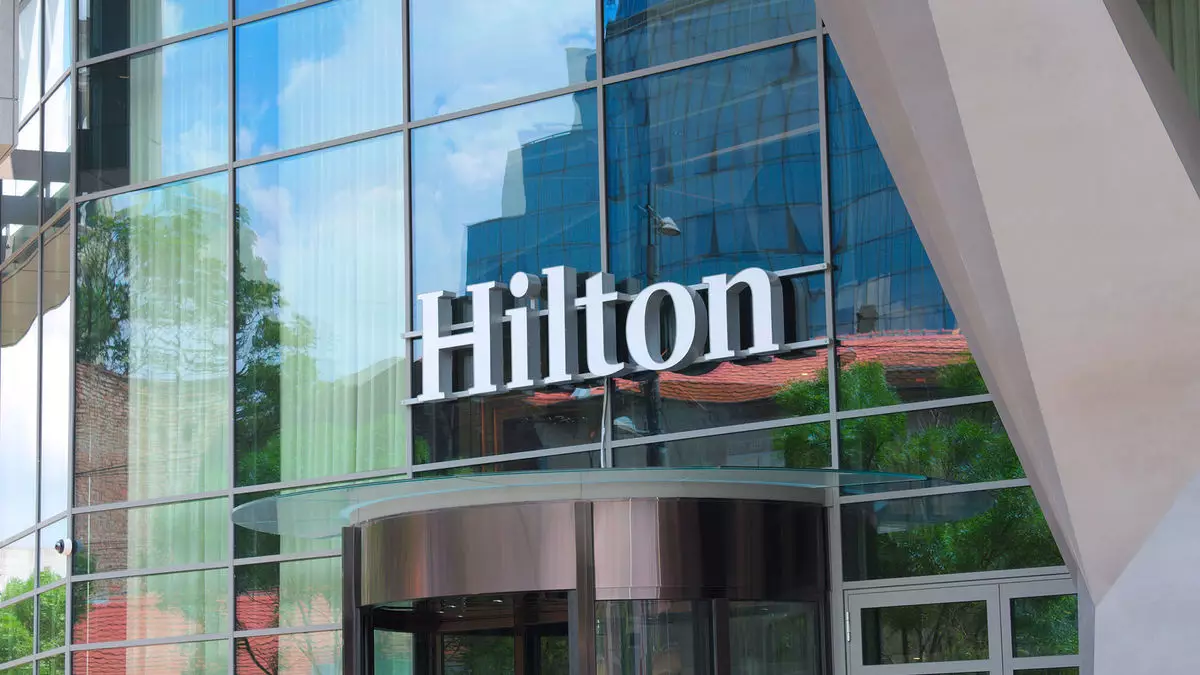In the ever-evolving world of hospitality, the challenges highlighted by Hilton’s recent quarterly earnings call reveal a complex interplay of factors affecting the industry. Despite a modest increase of 1.4% in Revenue Per Available Room (RevPAR) in the third quarter of the year, Hilton’s performance fell short of initial projections. CEO Christopher Nassetta acknowledged that a variety of issues contributed to this downturn, including a slower ramp-up in travel demand following the Labor Day weekend, unpredictable weather conditions, and the continuing fallout from labor disputes in the United States. Furthermore, Nassetta pointed out a stagnation in leisure demand, suggesting that travelers may be retreating into more cautious spending habits.
Analysts are divided in their reactions to these developments. Some express concern that this downturn is indicative of broader economic issues that could impact discretionary spending. Others, however, see these challenges as temporary industry fluctuations that should not obscure the underlying recovery trends post-pandemic. Michael Bellisario, a senior research analyst at Baird, likened these disruptions to “ankle-biters”—frequent but minor challenges that have historically affected the travel industry. As the U.S. market appears to be returning to pre-pandemic growth rates, it raises the question of whether this reset is merely an adjustment phase or a sign of deeper economic shifts.
Adding to Hilton’s and the broader industry’s challenges are ongoing labor disputes that have led to significant strikes organized by the Unite Here hospitality union. Since September, the union has targeted major hotel chains, including Hilton, Hyatt, and Marriott, across various U.S. cities. Patrick Scholes from Truist Securities highlighted that while Hilton might weather these storms better thanks to its global scale, individual properties, particularly those with significant union presence like the Hilton Hawaiian Village in Honolulu, face real risks. The potential financial impacts on such critical assets could reverberate through their parent companies.
Park Hotels & Resorts, which manages the Hilton Hawaiian Village, has publicly stated that it cannot provide an updated outlook for 2024 due to uncertainties surrounding labor negotiations. Similar sentiments were echoed by Sunstone Hotel Investors, which disclosed that the strike-related cancellations had forced the company to revise its earnings expectations downward. While the union has successfully reached agreements in some cases, the uncertainty around labor relations continues to loom over the industry.
A noteworthy trend emerging from this landscape is the shift in consumer behavior, particularly among value-conscious travelers. Jan Freitag, from CoStar Group, emphasized that inflationary pressures have affected lower-income consumers, limiting their discretionary spending capacity. This subduing of leisure travel demand could extend beyond budget accommodation, as increasing prices raise awareness of travel expenditures among all income brackets. Bellisario’s insights suggest that what began as constraints in the lower segment may be creeping into upper-market properties, spurring a general reevaluation of travel priorities.
Interestingly, as pandemic restrictions fade and traditional schedules normalize, travelers now face a wider array of choices and reduced flexibility due to fixed commitments. This increased supply—encompassing travel options like flights, cruises, Airbnb stays, and open borders—has rendered many consumers more price-conscious. With an abundance of travel options available, luxury and high-cost bookings may take a back seat as consumers prioritize value over premium experiences.
Amid these challenges, there’s a silver lining, particularly in group business travel. This segment is showcasing a notable growth trajectory, albeit with evolving booking patterns. Instead of large groups planning long in advance, there is a surge in smaller gatherings with short lead times. This trend reflects a shift in workplace dynamics, where teams that are less consistently together now opt for spontaneous group events.
Additionally, the steady recovery of business travel indicates optimistic prospects. Hilton’s Nassetta foresees a return to pre-pandemic demand levels in 2019, suggesting that the industry can expect ongoing recovery momentum. As midweek business transient travel shows promising growth, Freitag notes that a full recovery could recenter around key economic indicators like GDP and consumer confidence by 2025, aligning travel demand more closely with historical patterns.
The current state of the hospitality industry, as exemplified by Hilton’s latest earnings report, reflects an intricate mix of challenges and opportunities. As analysts note, the ability of hotel chains to adapt to shifts in labor dynamics, consumer behavior, and economic conditions will be critical in sustaining recovery momentum. While disruptions like strikes and changing leisure travel preferences present immediate hurdles, they also signal a shift towards a more resilient and adaptive industry capable of responding to a rapidly changing travel landscape. The path forward will require keen navigation through these complexities, ensuring that hospitality remains a vibrant part of the broader economy.


Leave a Reply